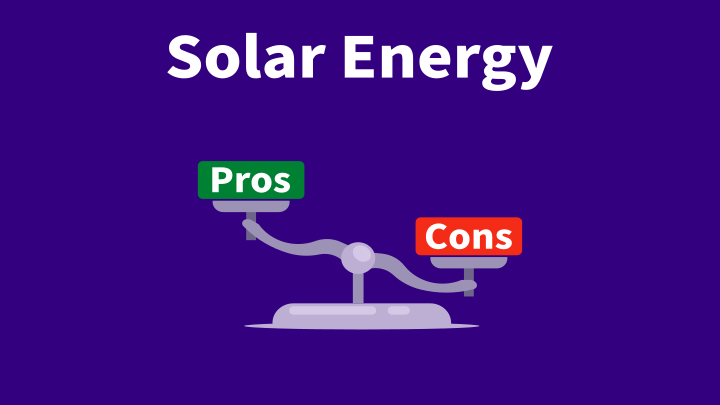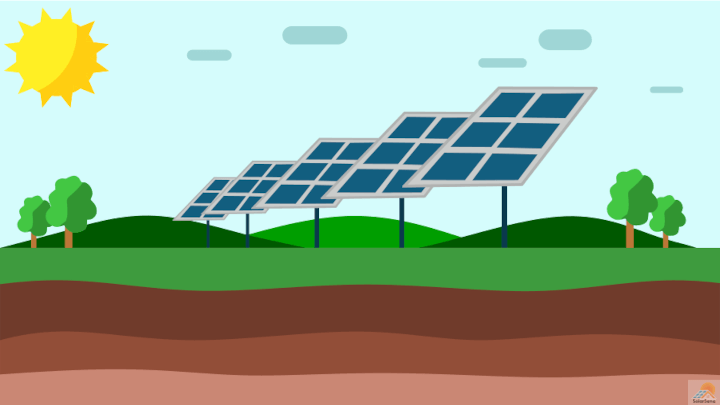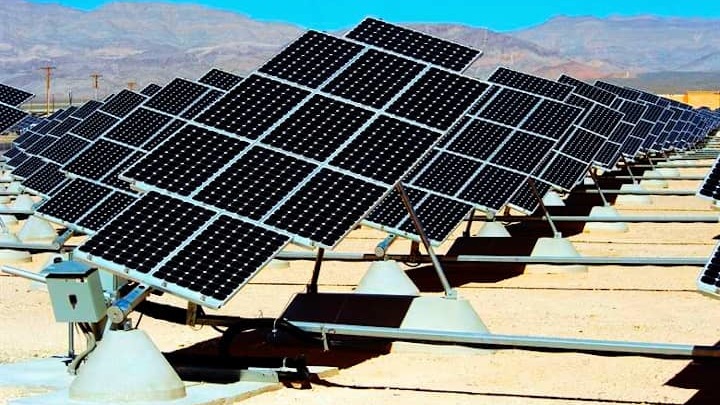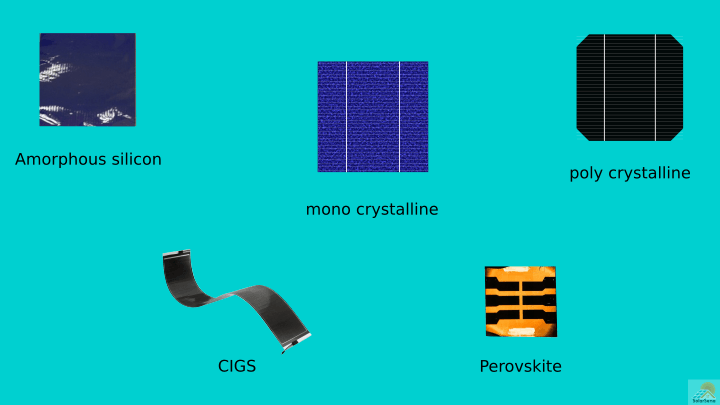Lets learn about some of the pros and cons of solar energy. We all have been hearing about climate change, the melting of the Arctic, the rising of sea level, and other threats of extinction. Although there is a continuing debate, the reason behind these perils certainly is man-made activities, like the burning of fossil fuels, toxic emissions from industries.
A reliable solution that we see to eliminate these ongoing catastrophes is to replace the current nonrenewable fuels with renewables, particularly solar energy. However, knowing the answer, we have not completely replaced coal, oil, and gas with solar power. Why? In fact, solar energy, as of 2020, remains a fraction of the total energy produced. It is a hard fact that we cannot refute.
The primary disadvantages behind solar and other renewables are the high cost and low efficiency. It might not hold in the future since things are rapidly changing. Over the years, scientists have substantially improved solar technology, and recent years have seen a meaningful decline in the price. Many American states, such as California, Nevada, Arizona, have achieved solar power at a levelized cost of traditional electricity.
As solar continues to evolve and improve, we will see many countries embracing clean solar technology. In this article, we will cover all advantages and disadvantages of solar energy.
Comparing advantages and disadvantages
Before we move forward and discuss each individual point separately, the table below gives a quick outline of all advantages and disadvantages of solar energy.
| Advantages | Disadvantages |
|---|---|
| Renewable, inexhaustible | Some pollution concerns |
| Will continue to save you from electricity bills for the long term. | High front-end cost |
| Low maintenance | Solar systems are expensive |
| Diverse applications | May not work for all since it’s seasonal and uneven |
| It’s evolving technology | Technology is still inefficient and unavailable to all |
| Technology is versatile | Solar systems take a lot of space and are not mobile |
Pros of solar energy
All the vehement clamor that we heard against nonrenewables are, to a great extent, true. And we have solar energy as a renewable alternative to fight against oil and gas. Let’s discuss what are the advantages of solar that make it a promising option.
Renewable
Practically, solar energy is infinite for us because our sun is going to live for five-billion years. Unlike fossil fuels, it is an ever-lasting energy source. The sun existed before the earth and will exist after the annihilation of the earth. Further, the sun is available throughout the year in a major portion of the earth.
Every day, we receive plentiful solar energy from the sun, which far exceeds our needs. A simple analysis says the earth receives more energy in an hour than we extract from fossil fuels in a year. Thus, the theoretical solar potential is huge and can easily fulfill all our current energy demands.
Saves your electricity bills
Today, in the United States, utility electricity prices are higher than never before and are unlikely to slow down a bit in the near future. It is wise to combat rising electricity prices by going solar. It is why there are so many American homes that have already gone for solar installations, and many will be in the coming years. As of 2019, America had achieved 2 million solar installations.
Having solar panels installed on your premises will not only save you from the high cost of electricity but also earn you some money by exporting any surplus production back to the power grid. Of course, for this to work, your solar panel system must be designed accordingly. If your solar fraction is more than 1, that means you will be producing more energy than you use, and will be able to make money off of your excess solar.
One of the major pros of solar panels is it is a one-time investment that continues to save bills for more than 25 years.
Low maintenance cost
Solar systems are almost maintenance-free equipment. They only require occasional cleaning, a few times a year. Cleaning does not require any expertise; one can handle it by itself. However, if you have any doubts, you can take help from local companies.
Modern solar panels can withstand weather and environment variations, such as rain, snow, hail. So, you do not have to worry about solar panels for the next 25 years after installation.

Another important advantage is there are hardly any moving parts associated with a photovoltaic system or a thermal heating system.
Nevertheless, some parts of solar systems—wires, cables, and inverters—may require inspection or replacement after a few years.
Diverse applications
We can convert solar energy into electrical energy via a photovoltaic system or thermal energy via a thermal heating system.
Thermal energy produced from solar mostly ends up heating household water, for example, heating swimming pools. It is also used for heating the air in a room. We can also cook food from solar thermal energy. Further, in underdeveloped regions, where water is scarce, we can distill dirty water with solar thermal energy. At the utility-scale, sunlight is used to produce electricity via steam.
Solar panels are one of the best ways to harness solar energy. The electricity produced by solar panels can easily substitute traditional electricity. It is the reason why we see solar panels everywhere, from homes to businesses, suburban to remote regions. Moreover, solar panels have reached beyond the earth. NASA has been using solar panels in satellites, space stations, and lunar rovers since the start.

Evolving technology
In the 1970s, solar cells gave efficiency less than 1%. Today, after five decades, scientists have achieved lab efficiency of more than 24% for monocrystalline silicon. And every year, the efficiency is further stretched to a new level. Newer and better materials are introduced into the market. Progressive developments and advancement in technology are good signs that the future of solar is bright. In the coming times, it is certain that the efficiency of solar technology will be much better, and solar will dominate the energy industry.
Versatile technology
Solar panels are very versatile. You can fix them wherever you want. The only thing to make sure is they receive enough exposure to sunlight. Commonly, people will see them on the roof of someone’s house or in the backyard. However, solar panels can also be fixed on the roof of your RV, on the facade as a building material, on boats, on curved surfaces, etc.
Cons of solar energy
After covering all the benefits, you might get into the wrong impression that solar is perfect and has no drawbacks. But solar has some serious shortcomings that are limiting its worldwide adoption.
Pollution
Yes, you read it right. Even though solar energy is completely renewable, solar technology is not. There are some rising pollution concerns with solar panels. Solar panels always deliver clean electricity from sunlight. The concerns arise in the manufacturing of solar panels. The production of solar panels is energy-intensive, which means it consumes a lot of energy.
Most solar panels in the world are made from silicon, the same element from which computer chips are made. Silicon, in itself, is not harmful, but some toxic compounds are obtained as a byproduct during the production of panels. Moreover, there are emissions of greenhouse gases, like carbon dioxide, sulfur dioxide, from mining to purification of silicon. All of these increase the carbon footprint of solar panels.
Another major issue is the disposal of solar panels after their lifespan. At the end of 2016, IRENA estimated 250,000 metric tons of photovoltaic waste. And by the end of 2050, this number is going to mount up to 78 million metric tons. Retired panels end up as landfilling waste.
Recently, some big manufacturers have taken initiatives to recycle degraded panels, but efforts still are not enough.
High front-end cost
Solar panels have a high front-cost. As of 2020, a 3 kW of a photovoltaic system would cost from $8k to $12k in California. That does not sound good, given that a 3 kW of a system may not even fulfill half of your energy needs.
Nowadays, many financial companies offer solar loans, leasing, and other solar financing options. You can take advantage of it to avoid the high front-end cost.
Nonetheless, whichever way you prefer, in the long term, solar panels will surely save a heck of a lot of electricity bills.
Solar systems are expensive
The cost of renewable technology is a primary barrier that is still to overcome. Despite the developments, solar panels, inverters, and batteries are quite expensive and not affordable for every country in the world. Besides equipment cost, the labor cost is also a major factor that increases the overall figure.
Seasonal and uneven
Solar technology is completely dependent on the sun. So, when there is no sun, we have no solar energy. It means your solar system will not work at night. In the day, it performs well only during solar peak hours—late morning and afternoon. For the rest day, the energy produced is not substantial.
Another disadvantage of solar energy is it is seasonal. In summer, the energy produced is maximum because of the bright sun and clear sky. But in winter and on rainy days, you may have to rely more on the utility grid.
Besides season variation, solar energy is uneven along the latitude of the earth. If you live in a country that is closer to the equator, the sun will shine brighter and longer, while people from countries closer to the poles may not benefit equally. It’s the reason why you will see countries that are closer to the equator, like America, have a huge solar potential in comparison to the regions closer to the Arctic.
Inefficiency
Though scientists have increased the inefficiency of solar panels more than 20%, it’s still inefficient. Four-fifths of the incident solar energy gets lost. Tackling low efficiency remains one of the biggest challenges of solar power. And it is likely to continue in the near future.
Takes a lot of space
One of the major drawbacks of solar systems is they take a lot of physical space. Whether solar panels are affixed on the roof or ground, they will need considerable space to generate a good amount of electricity. A typical residential panel is around 5.4 ft by 3.2 ft. So, even if you installed ten such panels, you will lose over 180 sq ft of surface area. Apart from solar panels, batteries are responsible for not being space-friendly.
In today’s world, we are running out of space because of the ever-rising population. If you live in a suburban or rural area, where living is spacious, solar systems are a really good investment. But in populous regions, like New York City, solar energy will not make sense.

Solar systems are fixed systems and not very mobile. Removing them requires labor work. Further, if you move a lot, these bulky systems may become inconvenient to you.



